Red Rock Canyon State Park
- December 22, 2023
- 0 comment
Located in the rugged beauty of the Mojave Desert in Southern California, Red Rock Canyon State Park stands as a geological marvel, captivating visitors with its stunning landscapes and vibrant hues. Renowned for its striking red rock formations, the park is a testament to the forces of nature that have shaped the region over millions of years. Towering cliffs, eroded buttes, and intricate canyons paint a surreal picture against the backdrop of the clear blue sky. As sunlight dances upon the rust-colored rocks, the park transforms into a kaleidoscope of warm tones, creating a visual spectacle that photographers and nature enthusiasts alike find irresistible.
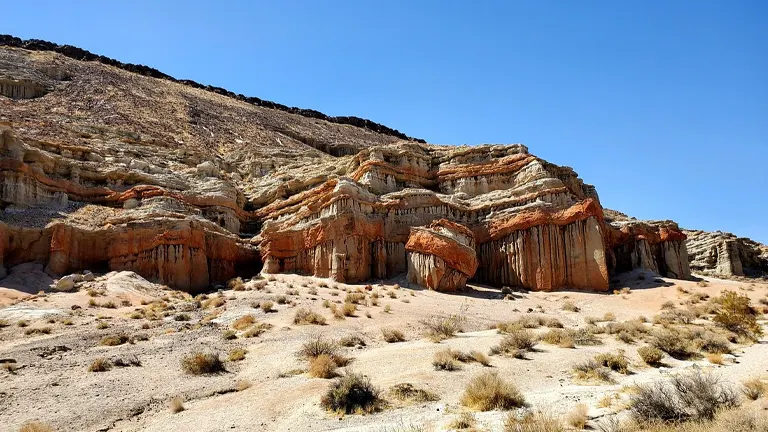
Beyond its aesthetic appeal, Red Rock Canyon State Park also boasts a rich cultural history, with evidence of ancient Native American communities etched into the rocky terrain. Whether exploring the scenic hiking trails, marveling at the unique geological features, or simply basking in the tranquility of the desert landscape, visitors to Red Rock Canyon State Park are treated to a mesmerizing blend of natural beauty and historical significance.
Characterizing Features of the Red Rock Canyon State Park
- Geological Marvels: Red Rock Canyon State Park is renowned for its striking desert cliffs, buttes, and rock formations, showcasing the incredible forces of nature that shaped the landscape over three million years.
- Vivid Colors: The canyons within the park boast vivid colors, a result of alternating layers of white clay and red sandstone. Pink volcanic rocks and brown lava formations further enhance the visual appeal, creating a stunning and unique geological palette.
- Floral Displays: After wet winters, the park transforms with notable floral displays, adding bursts of color to the arid surroundings. This seasonal phenomenon highlights the resilience of plant life in the desert ecosystem.
- Diverse Wildlife: Three overlapping desert ecosystems support a rich variety of wildlife, including eagles, falcons, roadrunners, hawks, coyotes, kit foxes, bobcats, lizards, mice, and squirrels. The park provides a habitat for diverse species, contributing to its ecological significance.
- Recreational Activities: Red Rock Canyon State Park offers a range of recreational activities, including camping, sightseeing, equestrian activities, hiking, and opportunities for solitude. Visitors can immerse themselves in the natural beauty and tranquility of the desert landscape.
- Cultural History: The park holds cultural significance as the ancestral home of the Kawaiisu people. Petroglyphs and pictographs in the El Paso Mountains serve as a testament to the early indigenous inhabitants, and the park reflects their ritual sites and trade activities with neighboring tribes.
- Historical Landmarks: The colorful rock formations in the park served as landmarks for 20-mule team freight wagons during the early 1870s. The park protects significant paleontology sites and the remains of 1890s-era mining operations, providing a glimpse into the area’s historical past.
- Stargazing Opportunities: Red Rock Canyon State Park is recognized for its exceptionally dark skies, making it an ideal location for stargazing. The dry climate, frequently cloudless skies, and low light pollution offer visitors a chance to observe celestial wonders, including galaxies like Andromeda and Triangulum.
- Bortle Class Designation: The park holds a Bortle class 2-3 designation, indicating a relatively dark sky suitable for astronomy. This classification underscores the exceptional nighttime viewing conditions and the contrast with light-polluted urban areas.
- Gateway Location: Positioned along State Route 14, the Antelope Valley Freeway, the park serves as a gateway connecting U.S. Route 395 with Southern California communities. Despite its accessibility, the park remains a natural refuge with no motorist facilities within its boundaries.
History
Red Rock Canyon State Park holds a rich tapestry of geological evolution and human history. The canyons, cliffs, and rock formations that define the park were shaped over three million years ago, creating a visually stunning landscape with alternating layers of white clay and red sandstone, complemented by pink volcanic rocks and brown lava formations. This area was once the home of the Kawaiisu people, and evidence of their presence lingers in the form of petroglyphs and pictographs in the El Paso Mountains, showcasing ritual sites and the trade activities of early indigenous inhabitants.
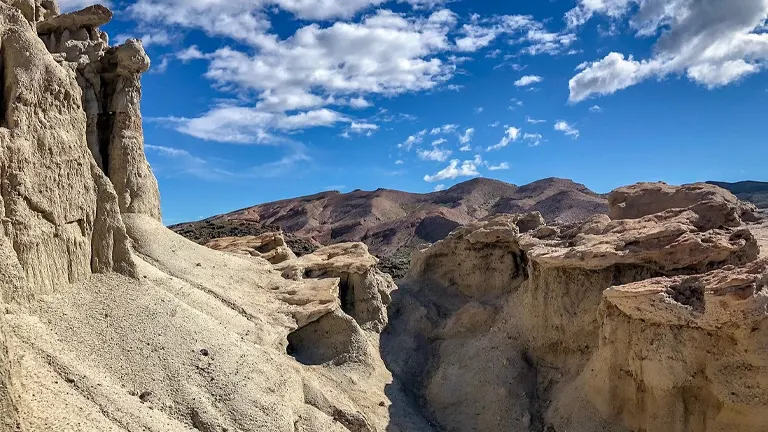
During the 1870s, the colorful rock formations served as vital landmarks for 20-mule team freight wagons in search of water, marking a pivotal chapter in the region’s history. The park also safeguards the remnants of 1890s-era mining operations and holds significance as a paleontological site. As a testament to its enduring appeal, Red Rock Canyon State Park continues to be a haven for those seeking not only the serenity of the desert landscape but also a glimpse into the cultural and historical threads that weave through this captivating natural sanctuary.
Importance in Conservation and Recreation of Red Rock Canyon State Park
Red Rock Canyon State Park is essential for both conserving the Mojave Desert’s diverse ecosystems and providing recreational opportunities. Covering around 27,000 acres, the park supports various wildlife, including eagles and roadrunners, while safeguarding unique geological features like cliffs and rock formations. Conservation efforts also focus on preserving historical landmarks, including paleontological sites and old mining operations.
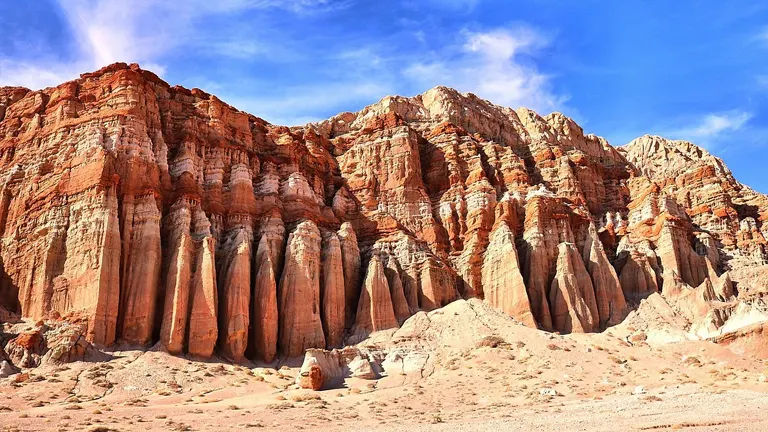
Alongside its conservation role, the park offers recreational activities like camping and hiking, allowing visitors to enjoy the natural beauty of the Mojave Desert. The park strikes a balance between preserving the region’s natural and cultural heritage and providing a space for people to connect with nature.
Unique Location of Red Rock Canyon State Park
Red Rock Canyon State Park occupies a distinctive location within the Mojave Desert, standing as a geological gem in the Tehachapi District of the California State Park System. Encompassing approximately 27,000 acres, the park is strategically positioned along State Highway 14 in Kern County, just 80 miles east of Bakersfield and 25 miles north of Mojave. This unique locale marks the convergence of the southernmost tip of the Sierra Nevada with the El Paso Mountains, creating a landscape characterized by scenic desert cliffs, buttes, and captivating rock formations.
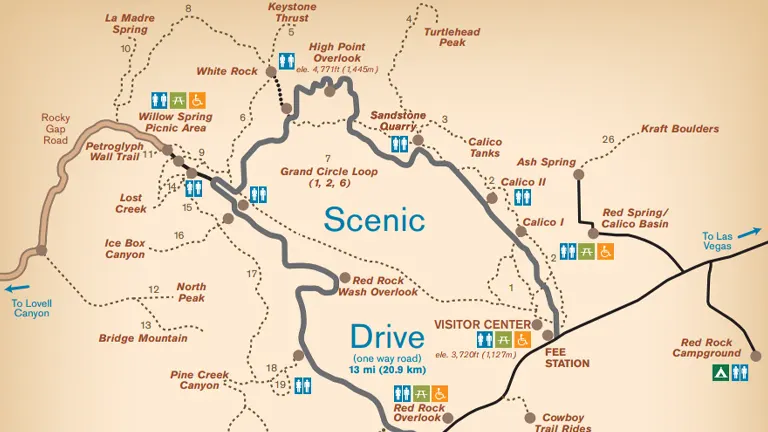
The park’s proximity to major routes, including State Route 14 (Antelope Valley Freeway), makes it a convenient gateway connecting U.S. Route 395 with Southern California communities. Despite its accessibility, Red Rock Canyon State Park retains an untouched quality, providing a natural haven for outdoor enthusiasts and preserving the intersection of diverse ecosystems within the arid beauty of the Mojave Desert.
Diverse Vegetation and Unique Plant Species:
- Mojave Yucca (Yucca schidigera): The Mojave yucca is a resilient and iconic plant species found in Red Rock Canyon State Park. Recognizable for its long, narrow leaves and towering flower spikes, this plant is well-adapted to the arid Mojave Desert conditions.
- Joshua Tree (Yucca brevifolia): Another emblematic species, the Joshua tree, graces the park’s landscape with its distinctive, spiky silhouette. Its unique form adds to the park’s scenic allure and highlights the adaptation of plant life to the desert environment.
- Wildflowers: During wet winters, the park comes alive with a colorful display of wildflowers. These seasonal blooms, including species like desert marigold and phacelia, contribute to the park’s visual diversity and provide a temporary burst of vibrant hues.
- Creosote Bush (Larrea tridentata): The creosote bush is a common and hardy shrub in the Mojave Desert. Its small, waxy leaves help it conserve water, making it well-suited for the park’s arid conditions.
- Blackbrush (Coleogyne ramosissima): Blackbrush, with its small, dark green leaves, is another characteristic shrub found in Red Rock Canyon State Park. It adds to the diversity of the plant communities and plays a role in stabilizing the soil.
- Fourwing Saltbush (Atriplex canescens): Fourwing saltbush is adapted to thrive in saline soils and is part of the diverse vegetation in the park. Its unique appearance, with four-winged seeds, adds interest to the flora of the area.
- Indian Paintbrush (Castilleja spp.): The vibrant red and orange bracts of Indian paintbrush are a striking sight among the desert vegetation. These flowers add splashes of color to the landscape, attracting pollinators during the blooming season.
- Pinyon Pine (Pinus monophylla): In higher elevations of the park, pinyon pine trees dot the landscape. Their presence contributes to the overall biodiversity and showcases the transition in vegetation as elevation changes.
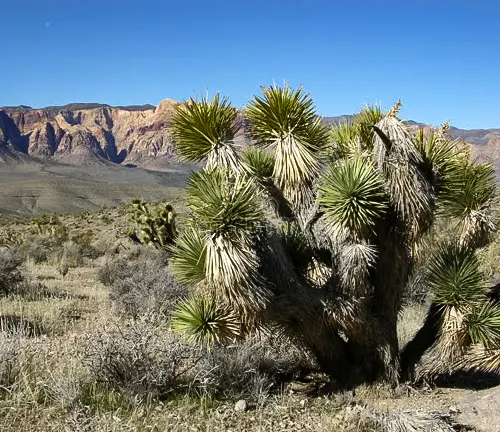
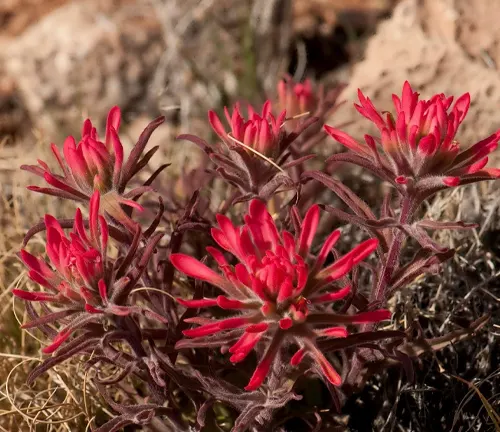
These plant species collectively create a diverse and resilient ecosystem within Red Rock Canyon State Park, adapting to the challenging desert environment and providing habitat and sustenance for the park’s wildlife. The seasonal variations in vegetation contribute to the ever-changing and dynamic character of this Mojave Desert landscape.
Fauna:
- Golden Eagles (Aquila chrysaetos): Red Rock Canyon State Park is home to golden eagles, majestic birds of prey that soar above the desert landscape. Their presence adds to the park’s avian diversity, and visitors may catch sight of these impressive raptors as they navigate the skies.
- Kit Foxes (Vulpes macrotis): The kit fox, a small and agile member of the canine family, inhabits the park’s diverse ecosystems. Well-adapted to desert life, kit foxes are often spotted in search of food or shelter within the rocky terrain.
- Desert Bighorn Sheep (Ovis canadensis nelsoni): These iconic mammals, with their distinctive curved horns, find a home in the rugged canyons and cliffs of the park. The desert bighorn sheep is a symbol of the region’s wildlife resilience in the face of arid conditions.
- Roadrunners (Geococcyx californianus): The charismatic roadrunner, known for its distinctive appearance and rapid ground movements, is a common sight in Red Rock Canyon State Park. These birds are adapted to the desert environment and contribute to the park’s avian biodiversity.
- Bobcats (Lynx rufus): Stealthy and elusive, bobcats inhabit the park’s varied terrain, blending seamlessly into the rocky landscape. Their presence underscores the importance of the park as a habitat for diverse mammalian species.
- Hawks: Various species of hawks, such as red-tailed hawks, can be observed soaring above the canyons, utilizing the park’s open skies for hunting and navigation.
- Coyotes (Canis latrans): Coyotes, adaptable canids, are part of the park’s wildlife population. Their nocturnal activities and distinctive vocalizations add to the auditory richness of the desert nights.
- Mice and Squirrels: Small mammals, including various species of mice and ground squirrels, contribute to the park’s ecosystem dynamics. Their role in seed dispersal and as prey for larger predators adds to the intricate web of life in Red Rock Canyon.
- Lizards: Diverse lizard species, adapted to the desert environment, can be spotted basking on rocks or swiftly navigating the terrain. Their presence underscores the ecological significance of the park for reptilian biodiversity.
- Burrowing Owls (Athene cunicularia): These small owls, known for nesting in burrows, may be found in the park’s open areas. Their presence reflects the diversity of bird life within Red Rock Canyon State Park.
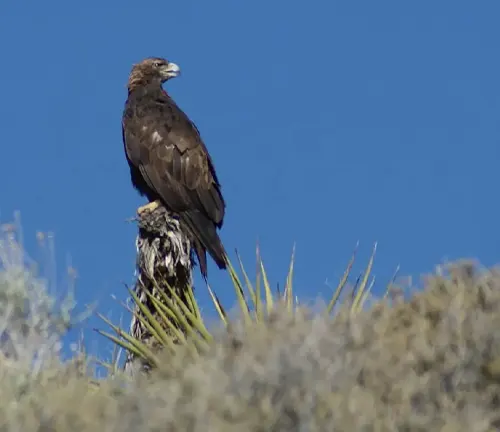
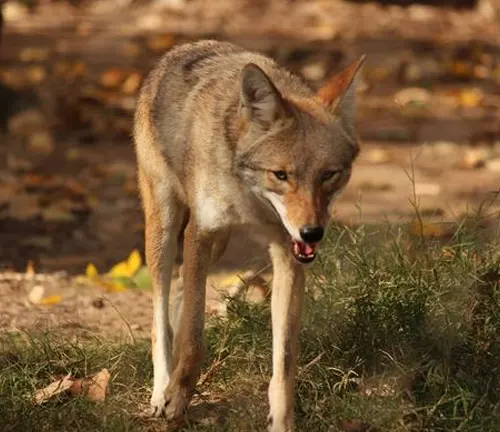
The fauna of Red Rock Canyon State Park contributes to the overall ecological health and biodiversity of the Mojave Desert. Visitors have the opportunity to observe and appreciate the intricate interactions between these diverse species, showcasing the resilience of life in this arid and captivating landscape.
Importance as a Wildlife Corridor and Habitat for Threatened Species
Red Rock Canyon State Park serves a crucial ecological role as a wildlife corridor and habitat for threatened species within the Mojave Desert. The diverse terrain, characterized by desert cliffs, canyons, and rocky expanses, provides a unique environment that supports a variety of wildlife, contributing to the overall biodiversity of the region. The park acts as a vital corridor for the movement and migration of species, facilitating the natural flow of animal populations across the expansive desert landscape.
One particularly noteworthy resident of the park is the desert bighorn sheep (Ovis canadensis nelsoni), a species that has faced challenges due to habitat fragmentation and human encroachment. Red Rock Canyon State Park offers critical refuge for these majestic mammals, providing essential breeding grounds and foraging areas. The park’s rugged canyons and rocky outcrops offer a natural habitat where bighorn sheep can thrive, contributing to the conservation efforts aimed at ensuring the survival of this threatened species.
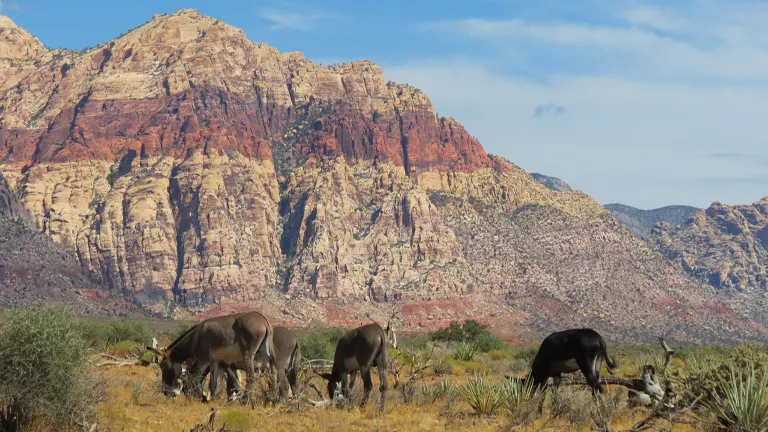
Additionally, the park’s diverse vegetation, including hardy species like Mojave yucca and Joshua trees, plays a crucial role in supporting herbivores and the broader food web. The availability of water sources, though limited in the desert, further enhances the park’s appeal as a habitat for various species, promoting their ability to adapt and persist in the arid environment.
As a designated state park, Red Rock Canyon also benefits from conservation initiatives and management strategies aimed at preserving its natural integrity. These efforts include habitat restoration projects, wildlife monitoring programs, and public education to promote responsible visitation and appreciation of the delicate ecosystems within the park.
Red Rock Canyon State Park emerges as a pivotal landscape not only for its scenic beauty but as a dynamic and essential wildlife corridor, fostering the survival of threatened species like the desert bighorn sheep. Its role in maintaining ecological connectivity and providing sanctuary for diverse flora and fauna underscores the broader significance of protected areas in sustaining the delicate balance of desert ecosystems.
Activities in Red Rock Canyon State Park for Visitors
1. Hiking
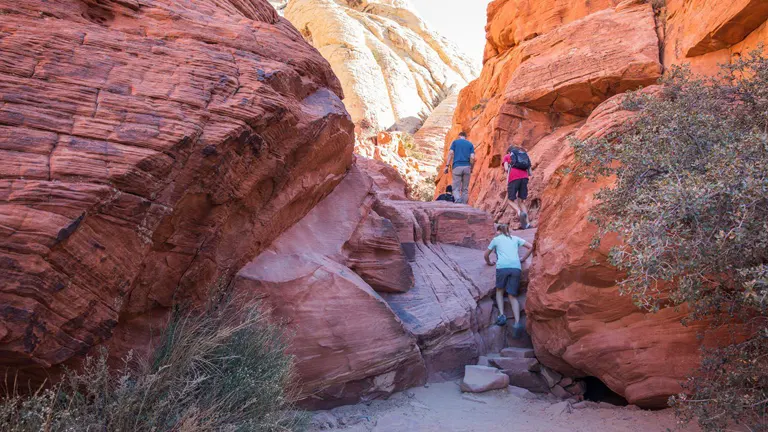
Red Rock Canyon State Park offers a network of scenic hiking trails that cater to varying skill levels, allowing visitors to explore the diverse landscapes of the Mojave Desert. Trails wind through canyons, revealing stunning rock formations and providing opportunities to witness the vibrant flora and fauna that call the park home.
2. Camping
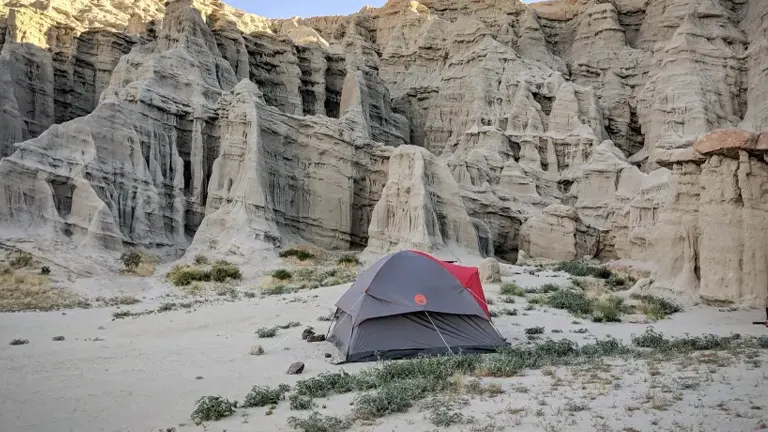
For those seeking an immersive experience, the park features camping facilities, including the Ricardo Campground. With a “first-come, first-serve” policy, campers can enjoy the tranquility of the desert night, surrounded by the iconic red cliffs and under the expansive desert sky.
3. Sightseeing
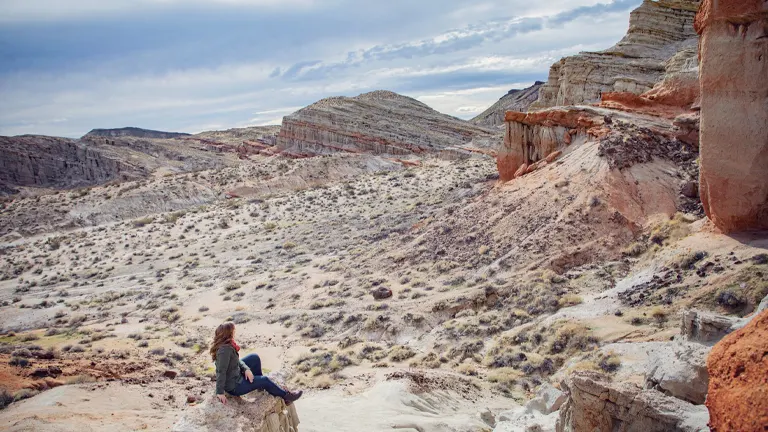
The park’s strategic location along State Highway 14 makes it easily accessible, offering visitors the chance to enjoy a leisurely drive through its scenic landscapes. Numerous viewpoints and pullouts provide ideal spots for capturing panoramic views of the distinctive rock formations and canyons.
4. Equestrian Activities

Red Rock Canyon State Park welcomes horseback riders, providing an equestrian staging area and designated trails. Horse enthusiasts can traverse the desert terrain, adding a unique perspective to the exploration of the park’s geological wonders.
5. Photography

The park’s striking red cliffs, unique rock formations, and vibrant desert flora create an ideal backdrop for photography enthusiasts. The interplay of light and shadow, particularly during sunrise and sunset, offers unparalleled opportunities for capturing the natural beauty of the Mojave Desert.
6. Stargazing
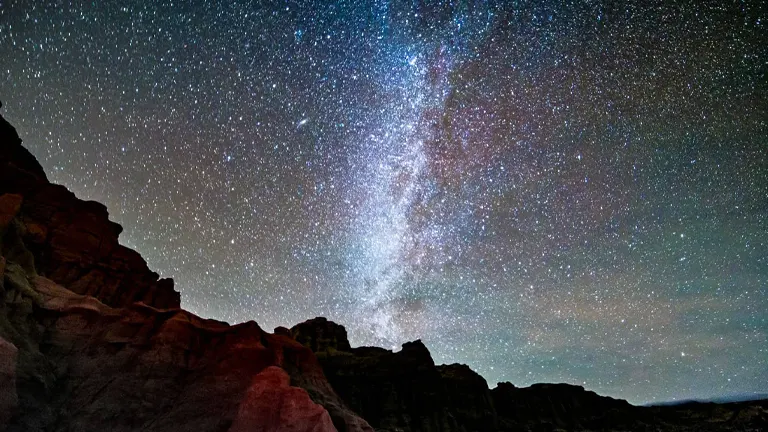
Recognized for its exceptionally dark skies, Red Rock Canyon State Park is a haven for stargazers. Visitors can witness celestial wonders, including galaxies like Andromeda and Triangulum, thanks to the park’s minimal light pollution and clear desert skies.
7. Educational Programs
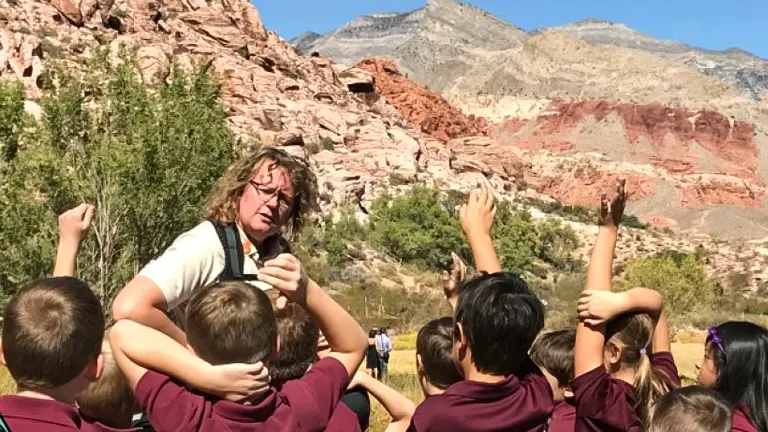
The park occasionally hosts educational programs and ranger-led activities, providing insights into the geology, flora, and fauna of the region. These programs enhance the visitor experience by fostering a deeper understanding and appreciation of the Mojave Desert’s unique ecosystems.
8. Bird Watching
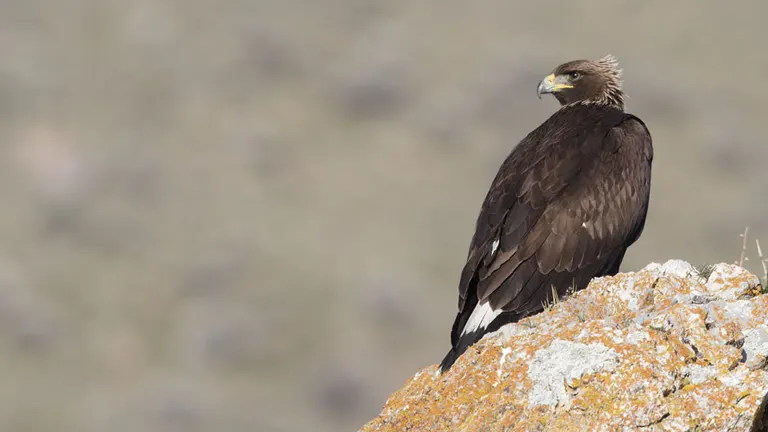
With diverse bird species, including golden eagles and roadrunners, Red Rock Canyon is a paradise for bird watchers. The open skies and varied habitats make it an excellent location for observing and identifying both resident and migratory birds.
9. Wildflower Viewing
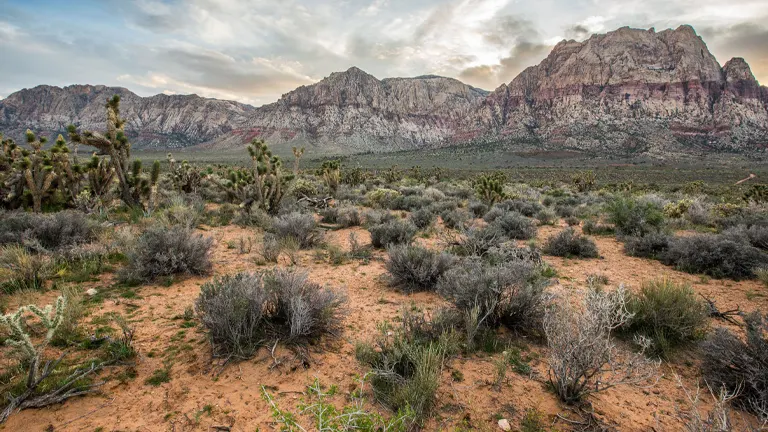
During wetter seasons, the park transforms with a burst of wildflowers, adding color to the desert landscape. Visitors can enjoy the seasonal display and witness the resilience of plant life in the arid environment.
10. Picnicking

Several designated picnic areas within the park provide a peaceful setting for visitors to relax and enjoy a meal amidst the natural beauty of Red Rock Canyon. These spots offer shaded tables and a chance to take in the surroundings at a leisurely pace.
Conservation and Management
Conservation and management efforts in Red Rock Canyon State Park are paramount to preserving its unique ecosystems, protecting wildlife habitats, and ensuring sustainable recreational use. The park is managed by the California Department of Parks and Recreation, and its conservation strategies involve a combination of environmental stewardship, habitat restoration, and responsible visitor management.
- Habitat Preservation: Red Rock Canyon State Park encompasses a diverse range of habitats, including desert cliffs, canyons, and rocky expanses. Conservation initiatives focus on preserving these natural landscapes to maintain biodiversity, providing a sanctuary for native flora and fauna. Sensitive areas and habitats crucial for threatened species, such as the desert bighorn sheep, are carefully identified and protected.
- Wildlife Monitoring: To assess the health of the ecosystem and the success of conservation efforts, the park engages in wildlife monitoring programs. These programs track the population dynamics of key species, including the desert bighorn sheep, and help inform adaptive management strategies to address emerging challenges.
- Habitat Restoration: Recognizing the impact of human activity and environmental factors, habitat restoration projects are implemented to rehabilitate disturbed areas. These efforts may involve replanting native vegetation, stabilizing soil, and mitigating the impact of invasive species, fostering the recovery of natural habitats.
- Educational Programs: The park emphasizes public education as a crucial component of conservation. Ranger-led programs and interpretive displays aim to raise awareness about the fragility of desert ecosystems, the importance of minimizing human impact, and the role visitors play in preserving the park’s natural integrity.
- Visitor Management: Balancing recreational use with conservation goals is central to the park’s management strategy. Implementation of responsible visitor practices, such as staying on designated trails, respecting wildlife habitats, and following Leave No Trace principles, helps minimize the ecological footprint of park visitors.
- Collaboration with Stakeholders: Red Rock Canyon State Park collaborates with various stakeholders, including local communities, environmental organizations, and researchers, to leverage collective expertise and resources. Collaborative efforts enhance the effectiveness of conservation initiatives and contribute to a broader understanding of the park’s ecological dynamics.
- Preservation of Cultural Resources: In addition to natural conservation, the park is dedicated to preserving its cultural heritage. Efforts are made to protect and interpret archaeological sites, including petroglyphs and pictographs, providing insight into the historical connection between indigenous peoples and the landscape.
Overall, the conservation and management strategies in Red Rock Canyon State Park reflect a holistic approach that prioritizes the protection of both natural and cultural resources. Through ongoing monitoring, adaptive management, and public engagement, the park endeavors to strike a balance between providing recreational opportunities and ensuring the long-term sustainability of this unique Mojave Desert ecosystem.
Recommendation
I strongly suggest visiting Red Rock Canyon State Park for a captivating fusion of natural splendor and cultural importance. With its varied ecosystems, distinctive landmarks, and recreational possibilities, the park provides a distinct and immersive adventure. Participate in responsible outdoor activities, including hiking and observing wildlife, while honoring the continuous conservation endeavors. The picturesque trails, historic sites, and cooperative conservation projects make Red Rock Canyon State Park an essential destination for those in search of a harmonious blend of nature and recreation.
Conclusion
In summary, Red Rock Canyon State Park is a captivating testament to the wonders of the Mojave Desert, seamlessly blending geological marvels, diverse ecosystems, and cultural history. The vibrant canyons, red cliffs, and unique rock formations offer a visually stunning experience, showcasing the forces of nature that shaped the region over millions of years. Serving as a crucial wildlife corridor, the park is home to diverse species, including the iconic desert bighorn sheep. Visitors engaging in responsible outdoor activities can connect with nature and contribute to conservation efforts. From scenic hikes to stargazing, each visit provides an opportunity to appreciate the delicate balance between preservation and recreation in this remarkable desert landscape. Red Rock Canyon State Park invites all to explore and cherish the beauty of this natural sanctuary, whether seeking solitude, adventure, or a deeper understanding of the Mojave’s ecological tapestry.
Encouraging Responsible Visitation
Reflecting on my time at Red Rock Canyon State Park, I am inspired to promote thoughtful exploration. This dynamic and evolving desert landscape flourishes when visitors embrace responsible engagement. Whether you are a passionate hiker, a photography enthusiast, or a family seeking a weekend escape, every moment spent in Red Rock Canyon State Park provides an opportunity to actively contribute to its conservation.
FAQs
- Why are the rocks in Red Rock Canyon so vibrant in color?
The vibrant colors of the rocks in Red Rock Canyon are a result of the alternating layers of white clay and red sandstone, complemented by pink volcanic rocks and brown lava formations. This geological tapestry, formed over millions of years, creates a visually stunning and unique palette. - Is stargazing popular in Red Rock Canyon State Park, and what can be seen?
Yes, stargazing is popular due to the park’s designation as one of the darkest skies within a two-hour drive of Los Angeles. On clear nights, visitors can witness celestial wonders, including the Andromeda and Triangulum galaxies, thanks to the minimal light pollution and clear desert skies. - Are there guided wildlife observation tours in the park?
While the park doesn’t offer guided wildlife observation tours, visitors can independently explore the diverse ecosystems. The park’s varied habitats make it an excellent location for observing species such as roadrunners, golden eagles, and the elusive desert bighorn sheep. - Can I camp in Red Rock Canyon State Park, and are reservations required?
Yes, camping is allowed at the Ricardo Campground on a first-come, first-serve basis. The campground provides a unique opportunity to experience the tranquility of the desert night under the expansive sky. Reservations are not required. - What is the significance of the petroglyphs and pictographs in the park?
The petroglyphs and pictographs found in Red Rock Canyon State Park are remnants of the early indigenous inhabitants, particularly the Kawaiisu people. These carvings and paintings serve as cultural and ritual sites, offering a glimpse into the region’s rich history. - How diverse is the plant life in Red Rock Canyon?
The park boasts a resilient array of plant life, including Mojave yucca, Joshua trees, creosote bushes, and various wildflowers. The diverse vegetation contributes to the overall biodiversity, adapting to the arid conditions of the Mojave Desert. - Can I bring my horse to Red Rock Canyon State Park for equestrian activities?
Yes, the park provides an equestrian staging area and designated trails for horseback riding. Horse enthusiasts can enjoy exploring the desert terrain, adding a unique perspective to their visit. - Are there ranger-led educational programs for visitors?
Yes, the park occasionally hosts ranger-led educational programs. These programs cover various aspects of the park, including geology, wildlife, and cultural history, enhancing the visitor experience and promoting a deeper understanding of Red Rock Canyon State Park.
In wrapping up our exploration of Red Rock Canyon State Park, we bid farewell to more than a destination—it’s been an immersive journey through the timeless Mojave Desert. The sun setting behind the iconic red cliffs paints a golden glow on canyons and unique rock formations, creating indelible memories. This natural sanctuary beckons for future adventures, offering an ever-unfolding story in the hues of the desert sky and etched in ancient geology. Each visit becomes a chapter in the ongoing narrative of resilience, beauty, and the delicate balance between preservation and exploration. Until the next encounter with this desert haven, the echoes of its whispers and vibrant memories linger, inviting all back to the timeless embrace of Red Rock Canyon.



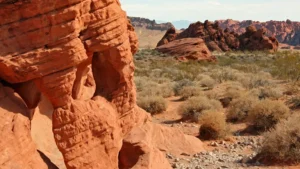
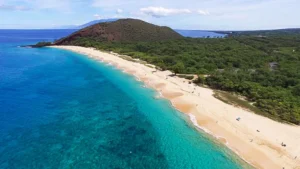

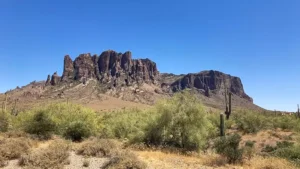
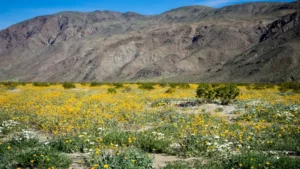
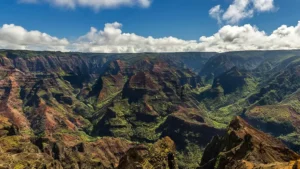


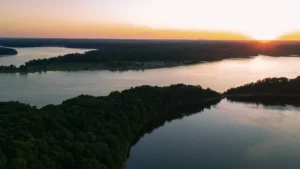


Leave your comment